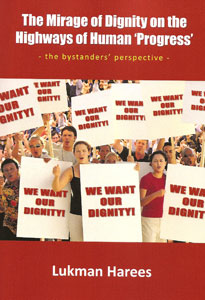Lord Buddha’s first sermon that illuminated the world
After attaining enlightenment at Buddha Gaya, on a Vesak Poya Day in May, 2600 years ago, Sakyamuni Gotama Buddha had thought whether there were people alive who could comprehend His profound dharma. Deva, Brahma Sampathi in Heaven had then addressed the All Knowing Perfect One and said, there were few on earth “with little dust in their eyes:’ He said:
“Rise O conqueror of war, of miseries, leader of man, free from all impurities; wander forth in this world,
O Bhagavan, preach your teaching, there will be persons who will comprehend:”
Gotama Buddha then surveyed with clairvoyancy (His Divine Eyes) where the virtuous and intelligent lived, and thought of His five fellow ascetics, who then resided at the Deer Park in Isipathana, modern Sarnath (Varnasi) close to Benares. He said, “In the language of angels, of serpents or even fairies if there be, in the speech of demons, the talk of humans, in them I shall expound my dharma, deep as it be, and in the tongue they may grasp.” So saying, He went to Isipathana and met the five ascetic friends, Kondanja, Baddiya, Assaji, Mahanama and Vappa to deliver without reservation His historic first Sermon, the Dhamma Chakkapavttana Sutta.
On that Esala Poya day in July, the Buddha preached the historic sermon to set in motion “the Righteous Wheel of Buddhism’ as opposed to the known wheel of a chariot used by a warrior who goes to war, with greed for power and land. This opened the ears of the world to learn of the noble dharma.
The Esala Poya message to the world The Buddha was concerned with only one thing; the way to end all forms of suffering on earth. Addressing the five ascetics at Sarnath, He said:
“This O monks is the noble truth of suffering. Birth is suffering, pain of mind and body is suffering, Illness is suffering, association with the unpleasant (people) is suffering, loss of wealth and disassociation with the beloved is suffering; when one does not receive what is desired is suffering, old age and death is suffering; in short, the fivefold clinging to craving, attachment is suffering.”
Suffering, the Buddha said is the first of the four Noble Truths.
He spoke of its cause, its end and the way to its end.He then explained the need to give up the two extremes of livings. That is enjoyment of sensual pleasures and the tormenting of one’s body (self- indulgence and self-mortification). He had Himself earlier gone to extremes with little or no food, believing in penances. Finally, He advocated living in the Middle Path (Majjhima Patipada) by following The Noble Eightfold Path which can help man to arrive at Nibbana.
What then is the Noble Eightfold Path? He referred to Samma Ditti (Right understanding), Samma Samkappa (Right thoughts), Samma Vacha (Right speech), Samma Kammantha (Right action), Samma Ajiva (Right livelihood), Samma Vayama (Right effort), Samma Sati (Right mindfulness), Samma Samadhi (Right concentration). Those who follow the Noble Eightfold Path will be free from clinging or attachment and craving which is the root of suffering. Craving is the cause of sorrow, Nibbana is the end of sorrow. At the end of the Buddha’s discourse Kondanna understood the Dharma and became a Sotapanna (One who has attained the first stage of Sainthhood).
The Buddha was a social revolutionary. He gave society a new vision, which had ethical values and reason, as the basis of all thinking. This religious leader is referred to as this “All Knowing One’’ the “Thatagata the “Perfect One” “Shanthi Nayaka”, “Loka Vidu’’, “Dharmaraja” and many more. He had spoken Magadhi, a language similar to Pali, and performed no miracles. He communicated his dharma by using different methods of delivery. When preaching He often used similes and parables. At the time Hindu Society was strongly caste conscious. There were four main institutions of caste – the Brahmin, the Kshatriya (kings and warriors) and the Sudras, the Chandala and other lower castes who had to serve the higher castes, without question. Gotama Buddha preached against that social order. He said, a Brahmin is not produced like fire, by the friction of dry wood, nor does he descend from the sky, nor from the wind, nor does he arise piercing the good earth. The Brahmin is brought forth from the womb of a woman in exactly the same way as a Chandala. He said nature contradicts the assumption of any specific inequality amongst mankind.
Other religions such as Hinduism, Jainism, Christianity and Islam teach that a man’s personality or self is his Soul (atman, pudgala, psycho) which enters the body at birth and quits at death. The soul is said to be an invisible ego. Buddha preached that belief in a permanent soul (self) is the most pernicious of errors, and is deceitful of illusions, which leads people to great sorrow and suffering, in many faceted forms. The belief of a soul must produce attachment which leads to craving or desire – pleasure on earth and beyond in heaven. The Buddha’s one mission was to end suffering on earth. He therefore totally rejected the concept or belief in the self conscious “I” or “self’, which is constantly changing (Anichya). In the Dhammapada it is said, “All conditioned things are impermanent.
All conditioned things are suffering (Sukkha) All conditioned or unconditioned things (Dhamma) are soulless or selfless”.
The Buddha showed the way to end suffering on earth. He said man’s goal is Nibbana: the elimination of greed, the elimination of hatred and of delusion. In the Samyutta Nikaya it is said, if one follows the Noble Eightfold Path, one could attain the goal of Nibbana. One has to rid oneself of Loba, Dhosa and Moha by the practice of Dane (Sacrifice), Sila (Morality) and Bhavana to reach the goal of Nibbana.
As the Enlightened Perfect One, Sakyamuni Gotama Buddha, for 45 long years, moved on foot throughout India, spreading His glorious dharma, He went out in search of people to make known and to share His teachings. The methods of communication He adopted suited the audience and the situation. As His message was eternal (Akalika), it was a great success, prompting Emperor Asoka, Bertrand Russel, and Jawaharlal Nehru to recognise him as the greatest religious leader, and skilful communicator of that time. Amidst age old religious obstacles, He triumphed. It was the triumph of truth and reason.
comments powered by Disqus



















